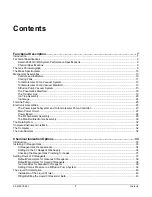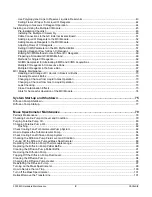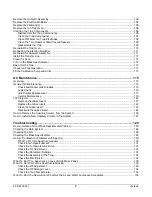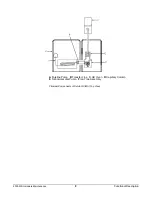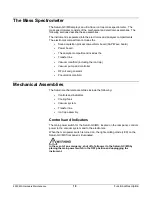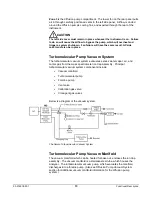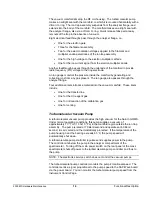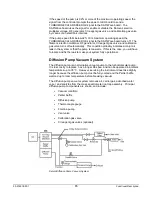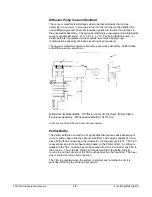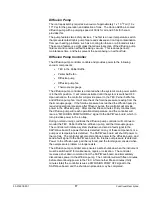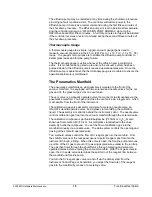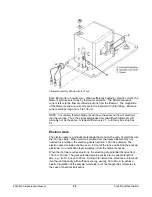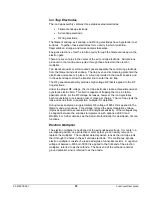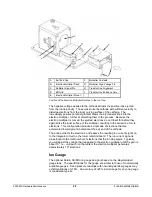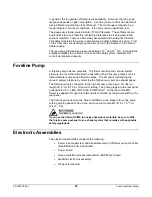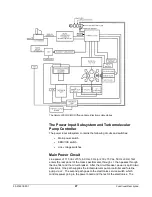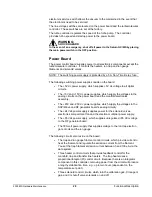
2000 MS Hardware Maintenance
14
Functional Description
The vacuum manifold sits atop the RF coil housing. The turbomolecular pump
makes an airtight seal with the manifold, to which it is mounted horizontally with a
Viton
O-ring. The ion trap assembly suspends from the analyzer flange, and
extends into the body of the manifold. The manifold makes an airtight seal with
the analyzer flange, also via a Viton
O-ring. Quick release tabs permit easy
removal of the trap in the absence of vacuum.
Eight electrical feedthroughs pass through the analyzer flange, i.e.,
•
One for the electron gate
•
Three for the filament assembly
•
Two for the axial modulation voltages applied to the filament and
multiplier endcap electrodes of the ion trap assembly
•
One for the high voltage to the electron multiplier cathode
•
One for the ion current signal from the electron multiplier anode
Another feedthrough passes through the underside of the manifold to provide
radio frequency (RF) voltage to the ring electrode.
An ion gauge monitors the pressure inside the manifold by generating and
collecting ions from any gas present. The ion gauge also passes through the
analyzer flange.
Four additional inlets introduce material into the vacuum manifold. These inlets
include
•
One for the transfer line
•
One for the CI reagent gas
•
One for introduction of the calibration gas
•
One for venting
Turbomolecular Vacuum Pump
A turbomolecular vacuum pump provides the high vacuum for the Saturn GC/MS.
Under normal operating conditions, this pump supplies a vacuum of
approximately 10
-5
Torr (1.33x10
-3
Pa) in the manifold region outside the ion trap
assembly. The pump is rated at 70 liters/second and operates at 60 liters/
second; it is air cooled and thermostatically protected. If the temperature of the
pump housing near the bearing exceeds 60
°
C, the pump speed will
automatically shut down.
A turbomolecular-pump controller regulates and supplies power to the pump.
The controller sits below the pump in the analyzer compartment of the
spectrometer. Turning off the main power switch on the rear panel of the mass
spectrometer shuts off power to the turbomolecular-pump controller and thus to
the pump.
NOTE: The electronics service switch does not control the vacuum pumps.
The turbomolecular-pump controller monitors the pump’s rotational speed. The
controller sends a signal proportional to the pump speed to the SAP/Wave board
via the power board. You can monitor the turbomolecular pump speed from the
Instrument Control Page.


